Top 9 Inner Mongolia Snack
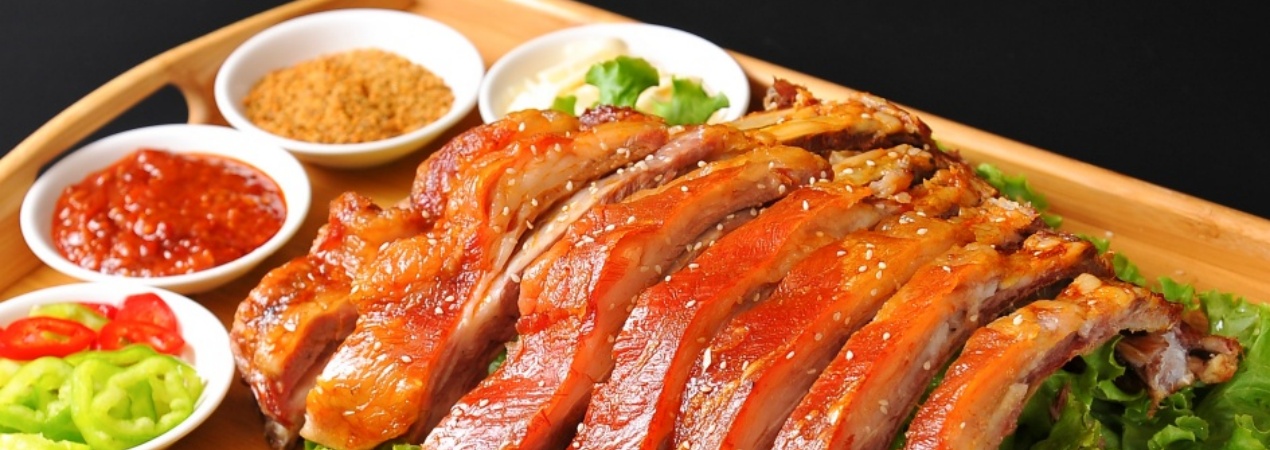
Inner Mongolia's dietary habits bear a deep nomadic cultural mark, with "meat and dairy for food, tea and wine for drinks" as their core. They focus on ingredients' natural taste and a bold, free way of eating. Not only are Inner Mongolia's snacks a treat for your taste buds, but they also show what grassland life is like. Next, we will tell you about 9 special snacks in detail—these snacks best show Inner Mongolia's flavor, and they will let you feel the unique charm of grassland food.
Shao Mai (Steamed Pork Dumplings)
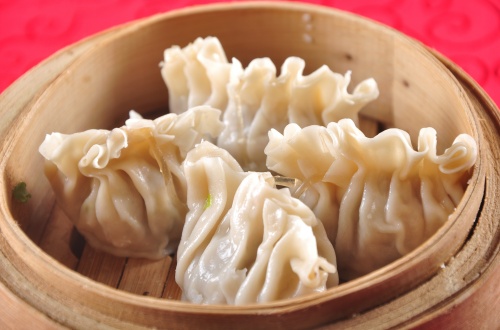 Shao Mai
Shao Mai An iconic traditional snack in Inner Mongolia, Shao Mai is most famously made with lamb filling. To prepare the filling, people mix fresh grassland lamb with green onions, ginger, sesame oil, and sesame seed oil. Small pieces of meat are kept in some regions to make the texture better. The dough wrappers are rolled so thin that they look like cicada wings. Their edges are pressed into delicate ruffled patterns—this not only keeps the fresh smell inside but also makes the dumplings nice to look at. Once steamed, you can see the tender filling through the translucent wrappers. Take a bite, and the savory juice will burst in your mouth, filling it with a rich mix of lamb and green onion flavors that aren't greasy at all. People in the area often eat Shao Mai with vinegar and brick tea. It's a must-have food for both morning tea and banquets.
Chifeng Duijia (Chifeng Sandwich)
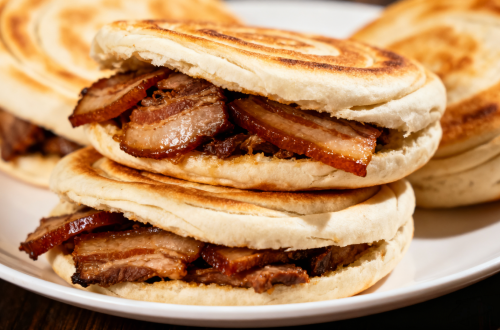 Chifeng Duijia
Chifeng Duijia Chifeng Duijia comes from "Chazi Baked Cake" — it's a special snack that mixes pastry and smoked meat. To make the baked cake, you mix oil and water to make the dough. Then you brush millet flour paste (to make it crispy) and ghee on the outside. Bake it in a hanging oven first, then put it on an iron fork and bake again. This makes the outside crispy and the inside soft. High-quality pork is used for the smoked meat inside. First, the pork is braised with more than ten kinds of spices, then smoked. The result is meat that's tender (lean parts aren't dry) and tasty (fatty parts aren't greasy). The finished Duijia looks golden and has clear layers. Take a bite, and you'll taste the wheat from the baked cake mixed with the savory smell of the smoked meat — it has a rich texture. Chifeng locals eat it as a daily staple. Its convenience and ability to fill you up have made it a big part of the local food culture.
Fengzhen Mooncake
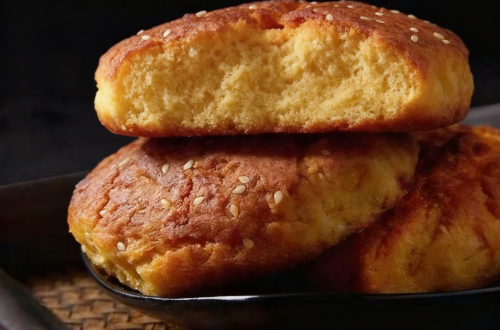 Fengzhen Mooncake
Fengzhen MooncakeFrom western Inner Mongolia, Fengzhen Mooncake is a classic snack – it tastes "crisp, fragrant and sweet", which makes it well-known. To make it, high-quality local wheat flour is used, along with flaxseed oil, white sugar, rock sugar, and candied red and green fruit strips. Traditional methods are followed: first knead the dough, then add the filling, shape it, and bake it at last. The mooncake has a crust with clear layers that melt in your mouth. Its filling is sweet and rich but not too sugary, and the unique smell of flaxseed oil is there all the way. Because it stays good for a long and is easy to carry, it used to be a must-have food for travelers in pastoral areas. Now, it's more than a festival gift; it's also a loved tea-time snack, and it holds the area's deep cultural memories.
Hohhot Peizi (Hohhot Baked Pastry)
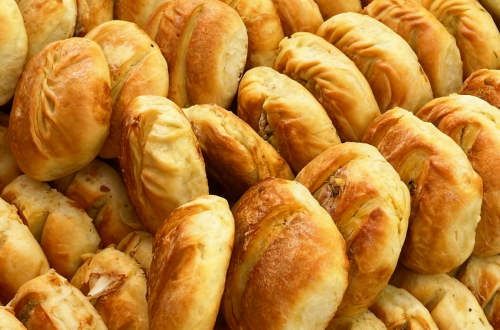 Hohhot Peizi
Hohhot PeiziHohhot Peizi is an iconic pastry of Hohhot and a famous Hui-style pastry. It is made by kneading fermented white flour with alkali until smooth, then adding oil, sugar, salt, eggs, etc., according to taste. After shaping, it is cooked through a process of "first pan-frying, then baking". There are many types of Peizi, such as plain Peizi, salty Peizi, and sweet Peizi, with shapes including round, square, triangular, and tongue-shaped. Baked in a traditional earthen oven, it has a crispy outer layer and fluffy inner part, with a rich wheat aroma. As a favorite breakfast of locals, it is often paired with lamb offal soup, or used to wrap Shao Mai (steamed dumplings) and skewered meat. Affordable and filling, it is a hometown flavor deeply engraved in the memories of Hohhot people.
Guo Cha (Mongolian Pot Tea)
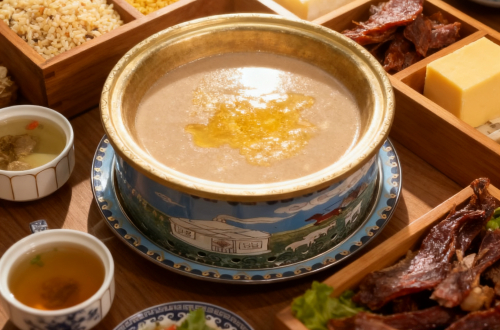 Guo Cha
Guo ChaGuo Cha is a highly distinctive savory drink from Inner Mongolia, often called "milk tea with meat". First, brick tea is boiled to make a strong tea broth, then ingredients like air-dried beef, cheese, and milk skin are added. It is stirred while boiling to blend all the flavors well. When drinking, you can add milk curd, roasted rice, or butter according to your preference, which makes the taste even more layered. Warm Guo Cha combines the aroma of milk and tea, with a rich, savory flavor. It is more authentic to enjoy it with fried dough twists or beef ribs. On the grasslands, Guo Cha is not only a warming drink but also an important etiquette for receiving guests, reflecting the dietary wisdom of the Mongolian people.
Nai Jiaokou (Mongolian Fermented Cream)
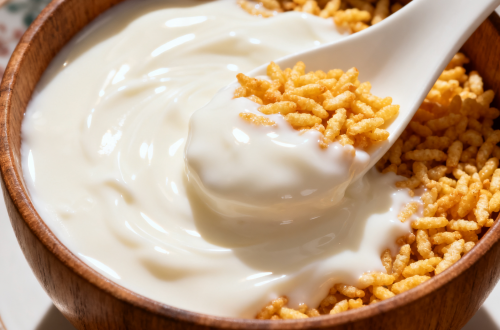 Nai Jiaokou with roasted rice
Nai Jiaokou with roasted riceNai Jiaokou is a real dairy snack from Inner Mongolia – it forms when fresh milk ferments naturally and splits into layers. The curd on top is smooth, like light cream, but with a stronger flavor. It tastes smoother than yogurt and fresher than cream, with a natural milk smell and a little sourness. You can eat it in many ways: scoop it up and eat it right away, mix it with roasted rice and sprinkle white sugar on top, or spread it on baked pancakes. As a daily tea snack, it not only has a special taste but also has lots of protein and fat. It's great for giving energy in pastoral areas, and it shows the original, natural side of grassland food.
Alxa Camel Meat Pie
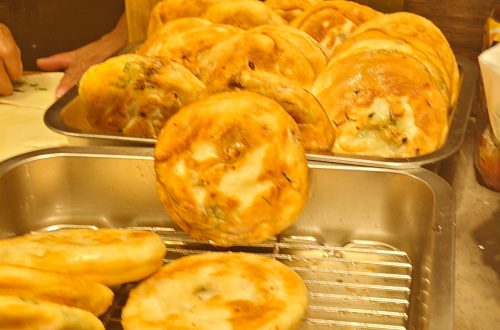 Alxa Camel Meat Pie
Alxa Camel Meat PieAlxa Camel Meat Pie is a special snack for the desert environment – it shows off the area's unique ingredients. Local camel meat is the main part of the filling, mixed with onions, ginger and other things. These remove the strong meaty taste and make it smell better, while the seasoning lets the meat's natural freshness stand out. To make the wrapper, mix warm water with flour. Roll the dough thin, wrap the filling inside, then flatten it and fry it in oil until both sides are golden and crispy. The finished pie has a crispy, tasty outside and a tender, juicy inside. The firm camel meat mixes with the sweet onion smell, making it really flavorful. It's a home-cooked food for Alxa people. Not only is it easy to keep, but it also gives lots of energy – it's a taste that reminds people of desert life.
Shouba Rou (Hand-Held Mutton)
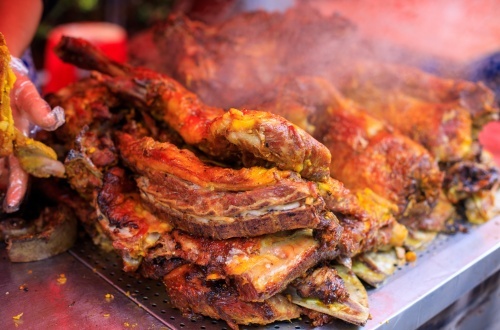 Shouba Rou
Shouba RouShouba Rou is a "living fossil" of Mongolian food culture and the soul of grassland cuisine, with the lamb from Sonid and Hulunbuir being particularly famous. Chunks of bone-in lamb (from lambs raised that year) are put directly into a pot of clear water—no seasonings are added. The meat is first boiled over a high flame, then simmered over a low flame. It is taken out of the pot as soon as it is 70% to 80% cooked, which preserves the original flavor of the lamb to the greatest extent. Traditionally, it is eaten with wild chive flowers or sesame salt. Take a bite, and the lamb aroma spreads on your tongue; paired with a bowl of hot milk tea, it fully shows the boldness of grassland food.
Jian Xuechang (Pan-Fried Blood Sausage)
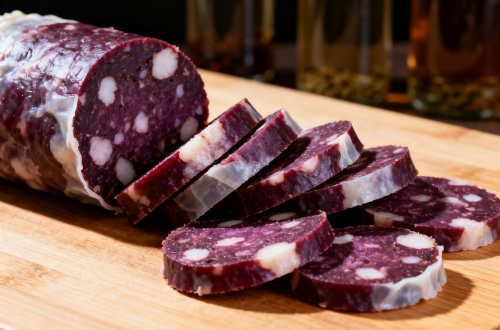 Xuechang
XuechangJian Xuechang (Pan-Fried Blood Sausage) is a "street food staple full of homey charm" in Inner Mongolia, and also a distinctive snack that tests the quality of local ingredients. Fresh lamb intestines are used and repeatedly cleaned until they are transparent and odor-free. Then fresh lamb blood is mixed with a small amount of chopped green onions, ginger, salt and water, stirred well, poured into the casings, tied tightly, and boiled in boiling water before being fished out to cool. When eating, it is cut into thick slices and pan-fried in butter or flaxseed oil. The fried blood sausage has a tender, fresh and fragrant taste without any fishy smell. Locals' favorite way to eat it is to dip it in wild chive flower chili sauce— the spiciness and freshness collide, making your mouth water with every bite.
Drop us a line and we'll connect you with the top China expert in no time!